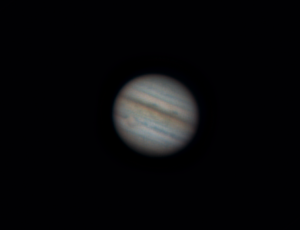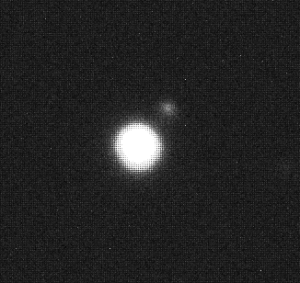Friday night’s public session was a real hit!
About 20 people showed up to look through their own scopes or our members’. There was a mixture of singles, couples and whole families. Some were returnees from previous star parties. Many are planning to join us next weekend too, when the moon will not intrude on some serious deep sky observing, during our first back-to-back public sessions.
It was perfectly clear all night, no wind. Even the Milky Way was faintly visible under the huge gibbous moon. Temps were in the 60s at first, and quickly gave way to the mid 40s, but held steady the rest of the night. Dew settled early and everything got wet for a time.
Most people stayed on the hill until 11:30 PM and some even stayed to see Orion rise above the trees in the SE around 1:45 AM.
Jupiter with its great “red” spot. Not very red in this pic.
I set up in the chart room as usual, and ran my EAA show with DSOs until the moon rose around 9 PM, then switched out the Hyperstar and went to planetary imaging for the rest of the night.
The chartroom was kept warm by the oil heater and the many human bodies who stopped by to see what was going on, and to grab some vitamin “O”. (Orion cookies) before returning to the unmistakably Fall temperatures outside.
While cutting the grass earlier in the day, I noticed that two of the largest trees that have been increasingly blocking our southern view for years were cut down by our nice neighbors. What a huge difference it makes! Once again, the cement pads located downhill from the building are prime real estate for observing. First come, first served.
Until next week, clear skies.
Some more shots from the viewing.
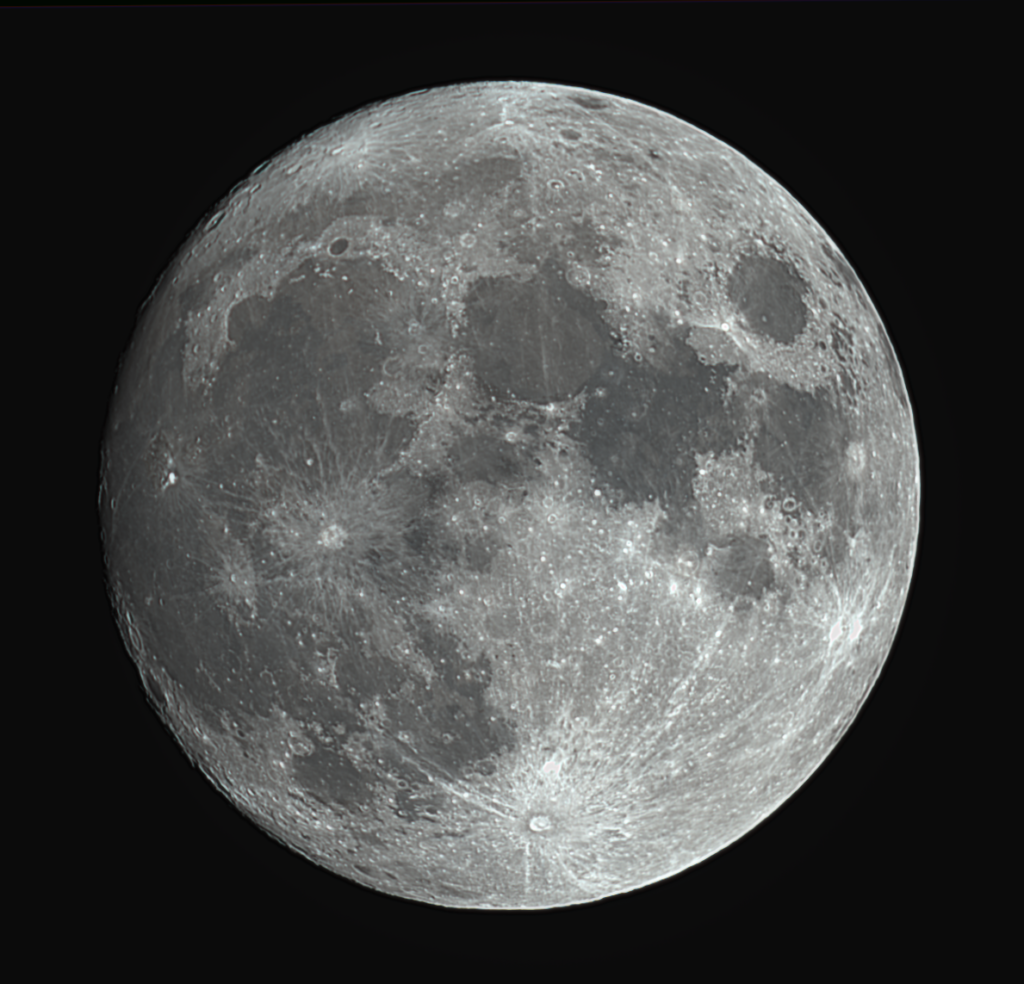
Moon taken on 9/24/2021 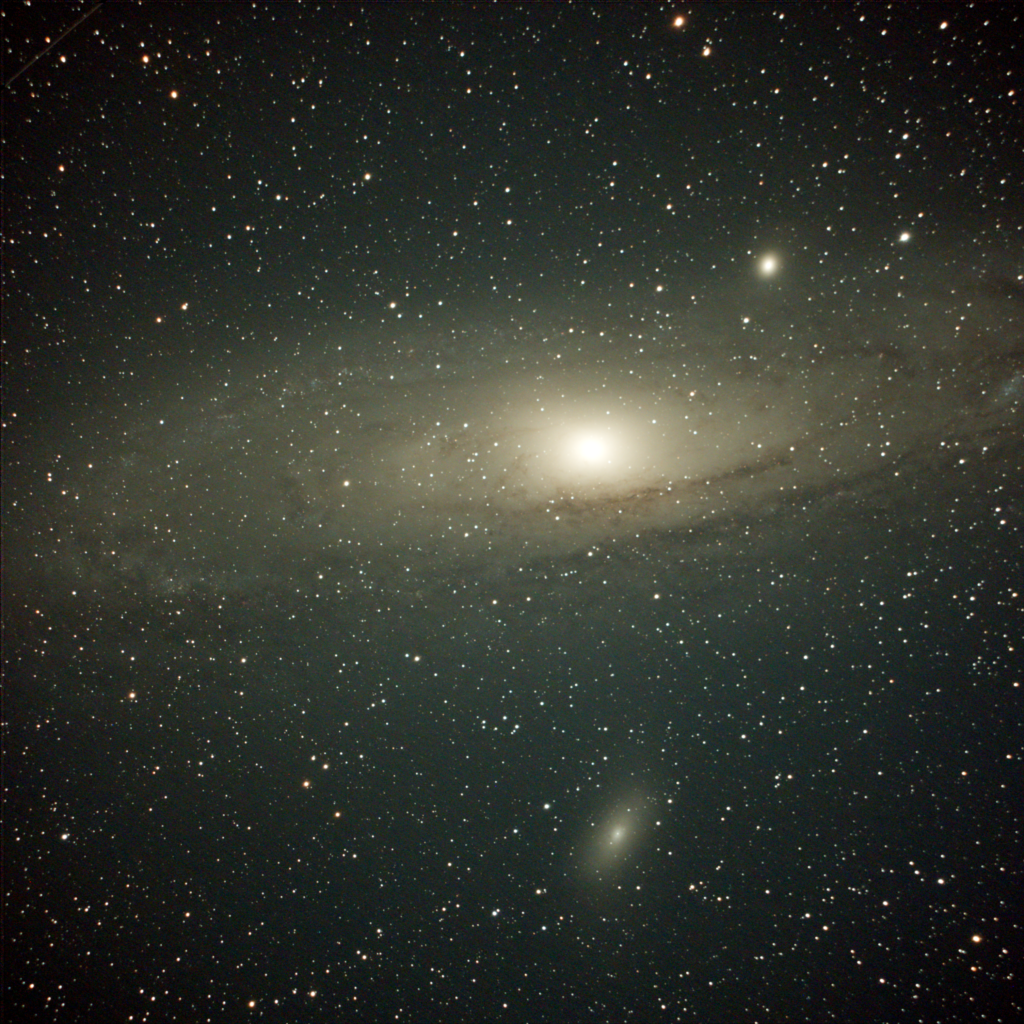
Andromeda Galaxy, M31, and M32 in the upper right and M101 in the lower right. In the upper left hand corner you will see a straight line which is a satellite passing by. This is an example of electronically assisted astronomy. 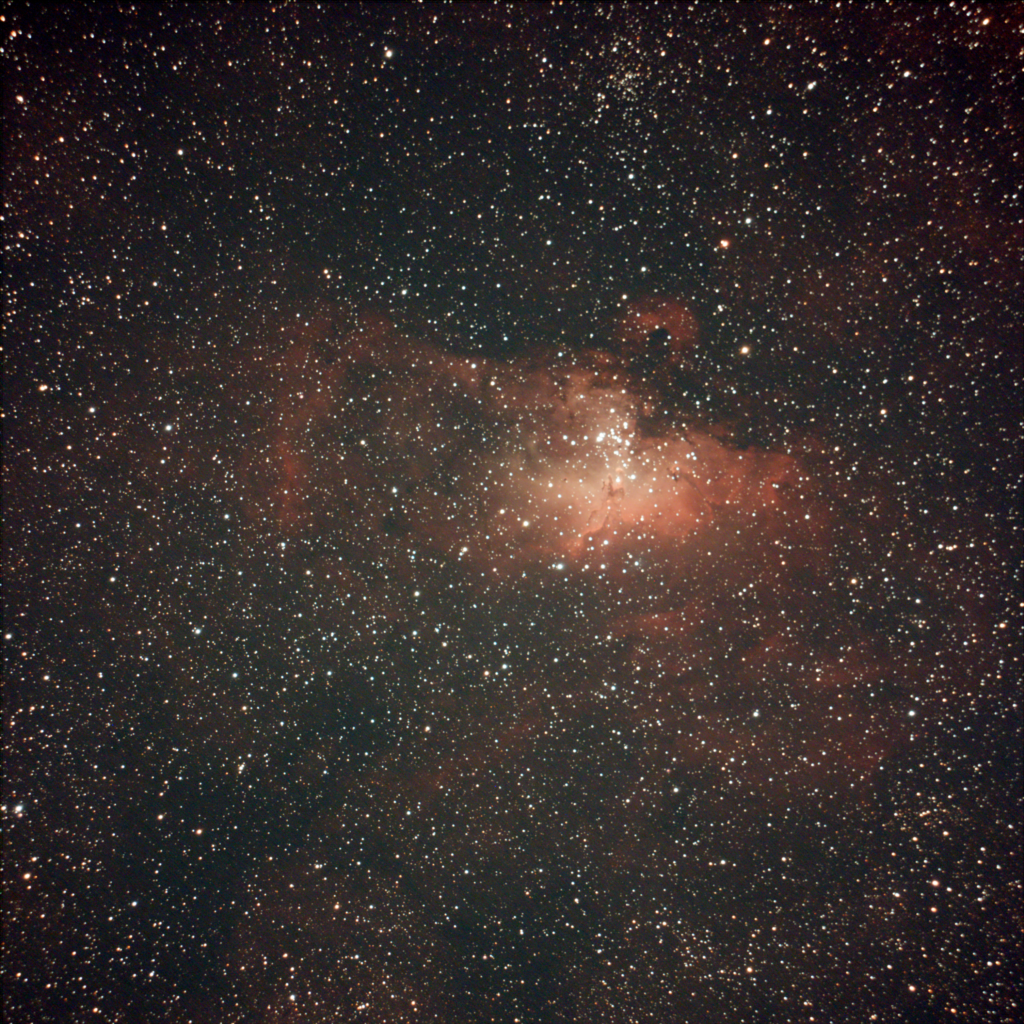
The Eagle nebula, M16, is an active region of space creating new stars. The Pillars of Creation, clouds within the nebula in the center are prominent. 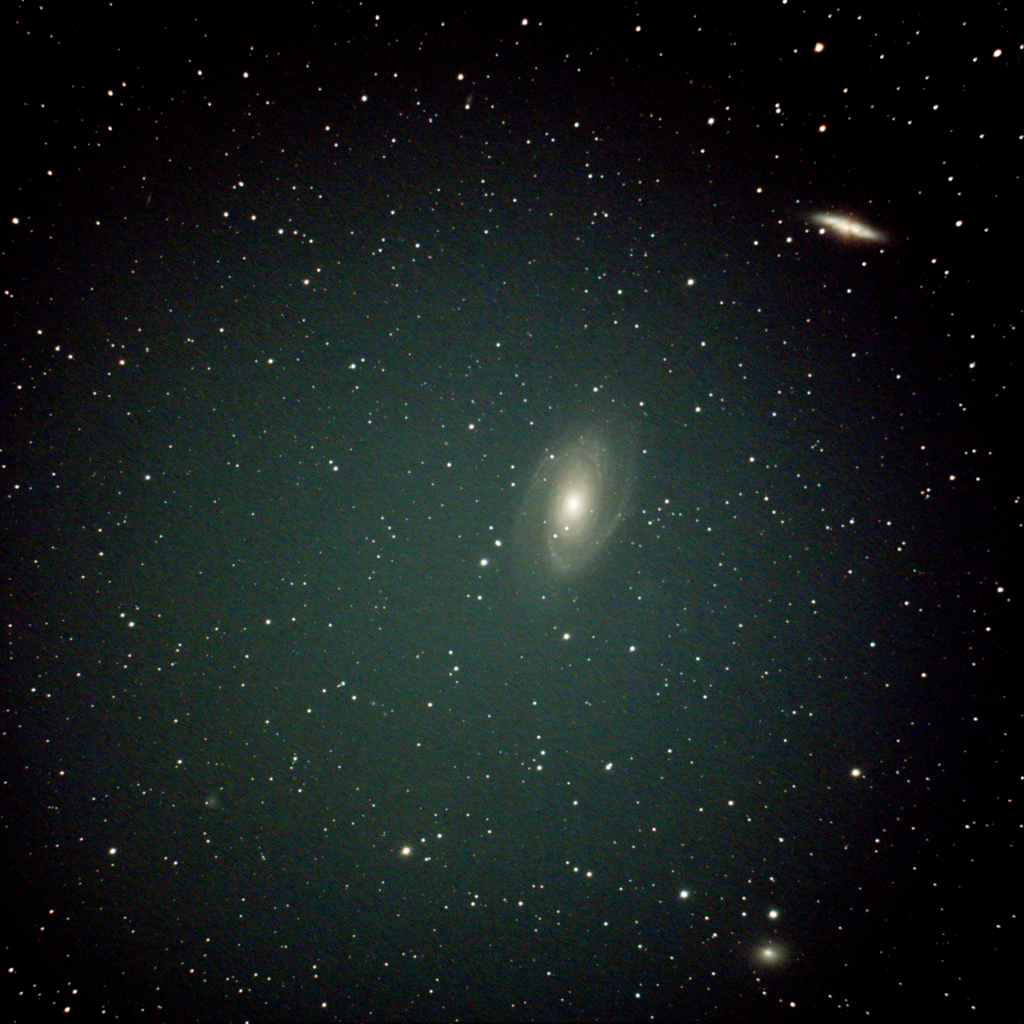
Bode’s Nebula, M81 & M82 are not nebulae but are galaxies. John Bode, who found them in 1774, described it as a nebula and the name stuck. M81 is the larger spiral galaxy in the middle of the frame while M82 is the smaller, edge on galaxy. M81 and M82 are relatively close together at 150 light years between the centers.

